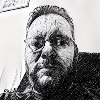Home
(129) All feeds
Last 24 hours
Download OPML
A Working Library
Alastair Johnston
Anna Havron
Annie
Annie Mueller
Apple Annie's Weblog
bgfay
Bix Dot Blog
Brandon's Journal
Chris Lovie-Tyler
Chris McLeod's blog
Colin Walker – Daily Feed
Content on Kwon.nyc
Crazy Stupid Tech
Dino's Journal 📖
dispatches
dominikhofer dot me
Excursions
Floating Flinders
For You
frittiert.es
Hello! on Alan Ralph
inessential.com
Jake LaCaze
Jo's Blog
lili's musings
Maggie Appleton
Nicky's Blog
Own Your Web
Paul's Dev Notes
rebeccatoh.co
reverie v. reality
ribbonfarm
Robert Birming
Robert Birming
Robin Rendle
Robin Rendle
Sara Joy
Sentiers – Blog
strandlines
Tangible Life
the dream machine
theunderground.blog
Thoughtless Ramblings
tomcritchlow.com
Žan Černe's Blog
(129) All feeds
Last 24 hours
Download OPML
*
A Very Good Blog by KeenanA Working Library
Alastair Johnston
Anna Havron
Annie
Annie Mueller
Apple Annie's Weblog
*
Articles – Dan Q*
Baty.net postsbgfay
Bix Dot Blog
Brandon's Journal
*
Chris CoyierChris Lovie-Tyler
Chris McLeod's blog
*
Colin DevroeColin Walker – Daily Feed
Content on Kwon.nyc
Crazy Stupid Tech
*
daverupert.comDino's Journal 📖
dispatches
dominikhofer dot me
Excursions
*
Flashing Palely in the MarginsFloating Flinders
For You
*
Frank Meeuwsenfrittiert.es
Hello! on Alan Ralph
*
Human Stuff from Lisa Oliverainessential.com
*
jabelJake LaCaze
*
James Van Dyne*
Jan-Lukas Else*
Jim Nielsen's BlogJo's Blog
*
Kev Quirklili's musings
*
Live & Learn*
Lucy BellwoodMaggie Appleton
*
Manton Reece*
Manu's Feed*
maya.land*
Meadow*
Minutes to Midnight RSS feedNicky's Blog
*
Notes – Dan Q*
On my OmOwn Your Web
Paul's Dev Notes
*
QC RSSrebeccatoh.co
reverie v. reality
*
Rhoneismsribbonfarm
Robert Birming
Robert Birming
Robin Rendle
Robin Rendle
Sara Joy
*
Scripting News for emailSentiers – Blog
*
Simon Collison | Articles & Streamstrandlines
Tangible Life
the dream machine
*
The Torment Nexus*
thejaymotheunderground.blog
Thoughtless Ramblings
tomcritchlow.com
*
Tracy Durnell*
Winnie Lim*
yours, tiramisuŽan Černe's Blog
